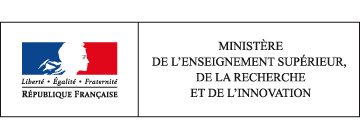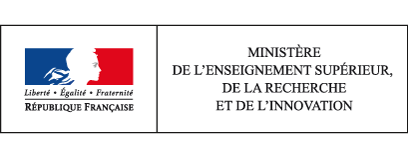43 environmental research and development
This page has been updated. Read 44. environmental research and development in Higher education & research in France, facts and figures 10th edition - June 2017
In 2012, R&D expenditure devoted either directly or indirectly to environmental issues was estimated to be €5 billion, equivalent to 11% of France’s gross domestic expenditure on R&D. Nearly 60% of expenditure on environmental research and development (excluding Energy and Transport) was incurred by businesses (compared with 20% in 2000).
Environmental research and development (R&D) lies at the crossroads of many different fields and lends itself to a multidisciplinary approach. This is due to the fact that many activities can have a positive impact on the environment, without having environmental protection as their primary aim. It therefore also encompasses research into managing natural resources, using energy in a rational way, renewable materials and biodiversity. More generally, environmental considerations affect almost all fields of research.
In 2012, R&D expenditure by the public and private sectors on issues relating to the environment was estimated to be €5 billion.
The French government has long contributed the lion’s share of expenditure on environmental R&D. This government expenditure can be broken down into three fields of research with specific objectives (Environment – Monitoring and protecting the global environment, Exploration and exploitation of the earth and sea, Natural environments, see chapter A5). The proportion of expenditure on environmental R&D implemented by government peaked at more than 81% in 2000. The gap between public and private sector stakeholders has been gradually shrinking ever since. In 2012, businesses implemented 49% of expenditure or 59% if the fields of Energy and Transport are excluded (chart 43.01).
In the business sector, environmental R&D, including Energy and Transport, accounted for 8.9% (€2.6 billion) of gross domestic expenditure on R&D (GERD) by the private sector in 2012. Four branches implemented 68% of expenditure on environmental R&D and accounted for 35% of intramural business enterprise expenditure on R&D (BERD): ‘Manufacture of motor vehicles’, ‘Energy’, ‘Manufacture of chemicals and chemical products’ and ‘Manufacture of air and spacecraft and related machinery’ (chart 43.02).
In 2012, the French government spent €2.5 billion on environmental R&D. Taken in its narrow sense (excluding Energy and Transport), environmental R&D absorbed 43% (€1 billion) of this expenditure. The main area of research within environmental R&D was ‘Monitoring and protecting the environment’, followed by university research into natural environments (chart 43.03).
6% of the MIRES budget allocations for R&D went towards environmental research in 2014, while those assigned to the various objectives within this field totalled €2 billion. The Energy and Transport objectives, which include environmental considerations, accounted for 8% of budget allocations (chart 43.04a and chart 43.04b). In 2014, the French Environment and Energy Management Agency (Agence de l’environnement et de la maîtrise de l’énergie – ADEME), French National Research Agency (Agence nationale de la recherche – ANR) and Bpifrance, together with the government departments responsible for ecology and industry, committed to providing more than €100 million in funding for R&D in environmental technologies or those that factor in environmental impacts. The French Ministry of Education, Higher Education and Research (Ministère de l’Éducation nationale, de l’Enseignement supérieur et de la Recherche – MENESR) contributed €147 million, most of which was devoted to training through research and university research.
How to cite this paper :
close
Key figures
Whole of France
Whole of France
43.01 Proportion of expenditure on environmental R&D implemented by businesses and the public sector in 2000 and 2012 (%)
You can embed this chart to your website or your blog by copying the HTML code and pasting it into the source code of your website / blog:
close
43.02 Intramural BERD devoted to environmental R&D in 6 research branches in 2012 (in €M)
You can embed this chart to your website or your blog by copying the HTML code and pasting it into the source code of your website / blog:
close
43.03 Different areas of research as a proportion of all environmental R&D by the public sector in 2012 (%)
You can embed this chart to your website or your blog by copying the HTML code and pasting it into the source code of your website / blog:
close
43.04a The MIRES’ budget allocations for R&D in 2014 (in €M) - Amounts devoted to environmental R&D and other socio-economic objectives (€M)
You can embed this chart to your website or your blog by copying the HTML code and pasting it into the source code of your website / blog:
close
43.04b The MIRES’ budget allocations for R&D in 2014 (in €M) - Breakdown by socio-economic objective of allocations devoted to environmental R&D, energy and transport (€M)
You can embed this chart to your website or your blog by copying the HTML code and pasting it into the source code of your website / blog:
close
Related statistical publication
 RéférenceS - L'économie de l'environnement en 2012 - Édition 2014 - Rapport de la commission des comptes et de l'économie de l'environnement - Collectif, Claudette-Vincent Nisslé - September 2014
RéférenceS - L'économie de l'environnement en 2012 - Édition 2014 - Rapport de la commission des comptes et de l'économie de l'environnement - Collectif, Claudette-Vincent Nisslé - September 2014 En 2012, il stagne, malgré un excédent commercial qui s’accroît fortement. Quant au marché du travail de l’économie verte, seuls les métiers purement environnementaux semblent légèrement moins touchés par les difficultés liées à la conjoncture actuelle.
L'économie de l'environnement en 2012 propose notamment une contribution sur la R&D pour la protection de l'environnement (pp. 75-78)
Translation
 Etat de l'enseignement supérieur et de la rechercheL'état de l'Enseignement supérieur et de la Recherche en France n°8 - juin 2015
Etat de l'enseignement supérieur et de la rechercheL'état de l'Enseignement supérieur et de la Recherche en France n°8 - juin 201543 - la recherche en environnement - Claudette-Vincent Nisslé







